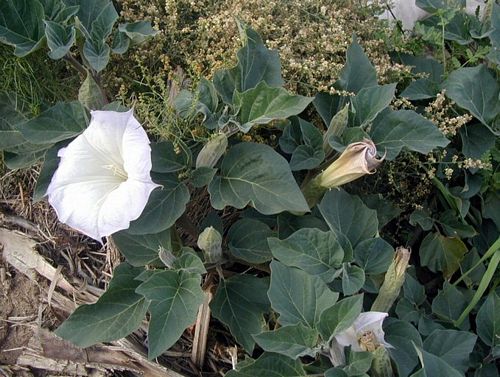
The Solanaceae, commonly known as the nightshade family, includes many economically important and widely cultivated species. Some of the defining characteristics of the Solanaceae:
- Alkaloids: Many produce alkaloids, which are nitrogen-containing compounds that often have pharmacological effects. Examples include nicotine in tobacco, atropine in belladonna, and solanine in potatoes.
- Alternate leaves: may be simple or compound.
- Inflorescence: cymes or umbels.
- Five-lobed corolla: flowers with five petals and five sepals
- Stamens: five.
- Superior ovary: positioned above the attachment of other floral parts.
- Fruit type: berries (e.g., tomatoes), capsules (e.g., tobacco), and other types.
- Economic importance: tomatoes (Solanum lycopersicum), potatoes (Solanum tuberosum), bell peppers (Capsicum annuum), and eggplants (Solanum melongena). Additionally, tobacco (Nicotiana tabacum) is a member of this family.
- Herbaceous or woody habit: Tomatoes and potatoes are herbaceous, while some trees, like certain species of Brugmansia, are woody.


Video showing characteristics of the Solanaceae.
Jepson key to the Solanaceae.